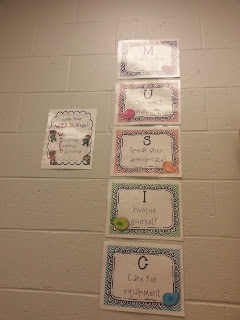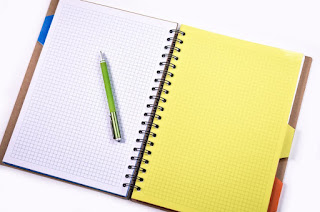My music room set-up
I have been so busy preparing my music classroom for the year, I thought I'd share some pictures of my room. I've added quite a few new things this year!
Here is one of my bulletin boards. This year, I'll be teaching flute, trumpet, trombone, and recorder, so I added the first fingerings for all of those. I have all of the sets in my TpT store (individual and bundled.)
My other bulletin board will correspond with our school-wide theme "Wild World Tour." Each grade level is focusing on one continent for the year, and for their musical program. When we learn a new song from a specific country/ continent, I can print out that song title and pin it to the board, showing where the song is from.
Here are a couple pictures of my word wall. It shows students how many musical terms they've learned throughout the years! You can find the word wall in my "Bird-Themed Classroom Set":
On Pinterest, I found this idea for creating a school mailbox (the original post is at http://confessionsofamusicteacher.blogspot.jp/2012/09/classroom-tour.html?m=1.) I loved the idea of a classroom mailbox, mostly just to keep me more organized! I found this mailbox at Wal-mart for $10, and I added the "air mail" sign to go with my bird theme. (If you've already bought the bird-themed classroom set, I've added the "air mail" sign; you can simply go to "my purchases" in TpT and re-download.)
You'll notice the "flat pencils" and "sharp pencils" containers by the mailbox; you can download those for free at http://www.teacherspayteachers.com/Product/Flat-and-Sharp-Pencil-Signs-Freebie-796984.
I used my Cricut machine to create the classroom quote. I love that Cricut machine!
These hand sign/ solfa posters can be found in many of my "songs and activities" melodic sets. A colleague of mine gave me the idea to post "I can" statements by my bulletin boards and classroom signs as a way of reinforcing concepts. I tried to use the "I can" editable statements that come with all of my "I can" sets, but decided they were too small. Because of that, I've added an editable full-sized page to each of the "I can" sets. This one says "I can sing with solfa." (Oh, and the bird is a luggage tag from Thirty-One...I couldn't resist!)
This set was fun to make! The signs are categorized by instrument family, and can be found here: http://www.teacherspayteachers.com/Product/Instrument-Family-Printables-819814
This is a picture of part of my counter. The labels on the drawers are from Deanna Jump's "Organization Station," which is so worth the money, especially if you, like me, sometimes have a hard time getting your drawers organized!
I'm really excited about my musical symbol wall! The arrows are pointing from the musical symbol, to where the symbol is found in an actual piece of music (this example is Haydn's "Surprise Symphony.") You can purchase my "Musical Symbol Set" on TpT; it includes the visuals, the music, and the arrows.
My rules spell MUSIC, which makes them easy to remember! These rules can be found in my "Fabulous First Day" set. These rules are bird-themed, but the set comes with owl-themed, rockstar-themed, and plain.
I was really excited to find this hanging folder system on Pinterest! I often end up just throwing papers in my desk because my file folders are so tightly packed in my desk, they're hard to get into. This will make organizing much easier! This is called a Filetastic, and can be found at http://www.mardel.com/education/organization-and-storage/filetastics.aspx. I also bought the file folders through Mardel. The filetastic is hanging with the help of adhesive hooks.
Since I have a bird theme this year, I changed my "thinking chair" to correspond. When students need time to think (i.e. a time out), they go to the "fell out of the nest" chair, and when they are ready, they go to the "ready to fly" chair. The "fell out of the nest" visual is in my behavior system in the Bird-Themed Classroom, and I have added "ready to fly" to the set; you can re-download the set to get the visual if you've already purchased it.
What ideas for classroom set-up are you excited about? Feel free to comment below!








.jpg)












MENU SOCIAL LINKS